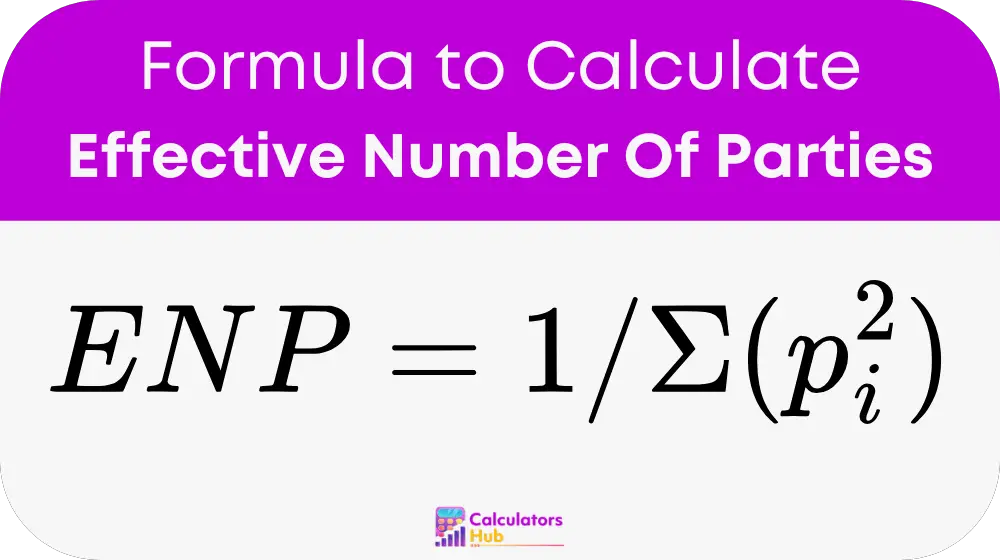The Effective Number Of Parties Calculator is a useful tool in political science that measures how many political parties are effectively contributing to the political competition in a system. It adjusts for party size to give a more accurate view of party fragmentation than simply counting the number of parties.
This calculator falls under the Political Science Calculators category. Researchers, political analysts, and students use it to understand the level of competition or dominance in a legislature or election system.
Rather than treating all parties equally, this calculator weighs each party’s vote or seat share. As a result, it offers a clearer picture of power distribution in democratic systems and helps compare political landscapes across countries or over time.
formula of Effective Number Of Parties Calculator

Variables:
- ENP:
Effective Number of Parties — the adjusted count of parties based on their relative influence. - p_i:
Proportion of votes or seats held by the i-th party (e.g., 30% is written as 0.3). - Σ(p_i²):
The sum of the squares of each party’s proportion.
Calculation Steps:
- Gather the data for the proportion of votes or seats per party.
(e.g., Party A: 0.4, Party B: 0.3, Party C: 0.2, Party D: 0.1) - Square each proportion:
(0.4² = 0.16, 0.3² = 0.09, 0.2² = 0.04, 0.1² = 0.01) - Add the squared values:
(0.16 + 0.09 + 0.04 + 0.01 = 0.30) - Calculate the reciprocal:
ENP = 1 / 0.30 ≈ 3.33
This means there are about 3.33 effective parties, even if four parties exist, because their sizes vary.
Reference Table: Vote Distribution vs. ENP
This table gives estimated ENP values based on common vote or seat distributions. It’s helpful for quick comparisons without performing the full calculation.
| Vote Share Distribution (approx.) | ENP (approx.) |
|---|---|
| 50%, 30%, 20% | 2.38 |
| 40%, 30%, 20%, 10% | 3.33 |
| 25%, 25%, 25%, 25% | 4.00 |
| 60%, 20%, 10%, 10% | 2.13 |
| 34%, 33%, 33% | 3.00 |
| 90%, 5%, 5% | 1.22 |
Note: The more equal the vote or seat shares, the higher the ENP.
Example of Effective Number Of Parties Calculator
Scenario:
A national election has the following vote shares:
- Party A: 35% → 0.35
- Party B: 25% → 0.25
- Party C: 25% → 0.25
- Party D: 15% → 0.15
Step 1: Square each value
0.35² = 0.1225
0.25² = 0.0625
0.25² = 0.0625
0.15² = 0.0225
Step 2: Add the squares
0.1225 + 0.0625 + 0.0625 + 0.0225 = 0.27
Step 3: Take the reciprocal
ENP = 1 / 0.27 ≈ 3.70
Result: Although there are four parties, the system behaves like one with 3.70 effective parties, showing relatively balanced competition.
Most Common FAQs
A: ENP reflects the actual influence of each party. If one party dominates while others are very small, ENP will be closer to 1, even if several parties exist.
A: You can use either, depending on what you’re analyzing. Use votes to study electoral behavior and seats to analyze legislative power.
A: A high ENP suggests a more fragmented or competitive party system, where power is shared more equally across multiple parties.